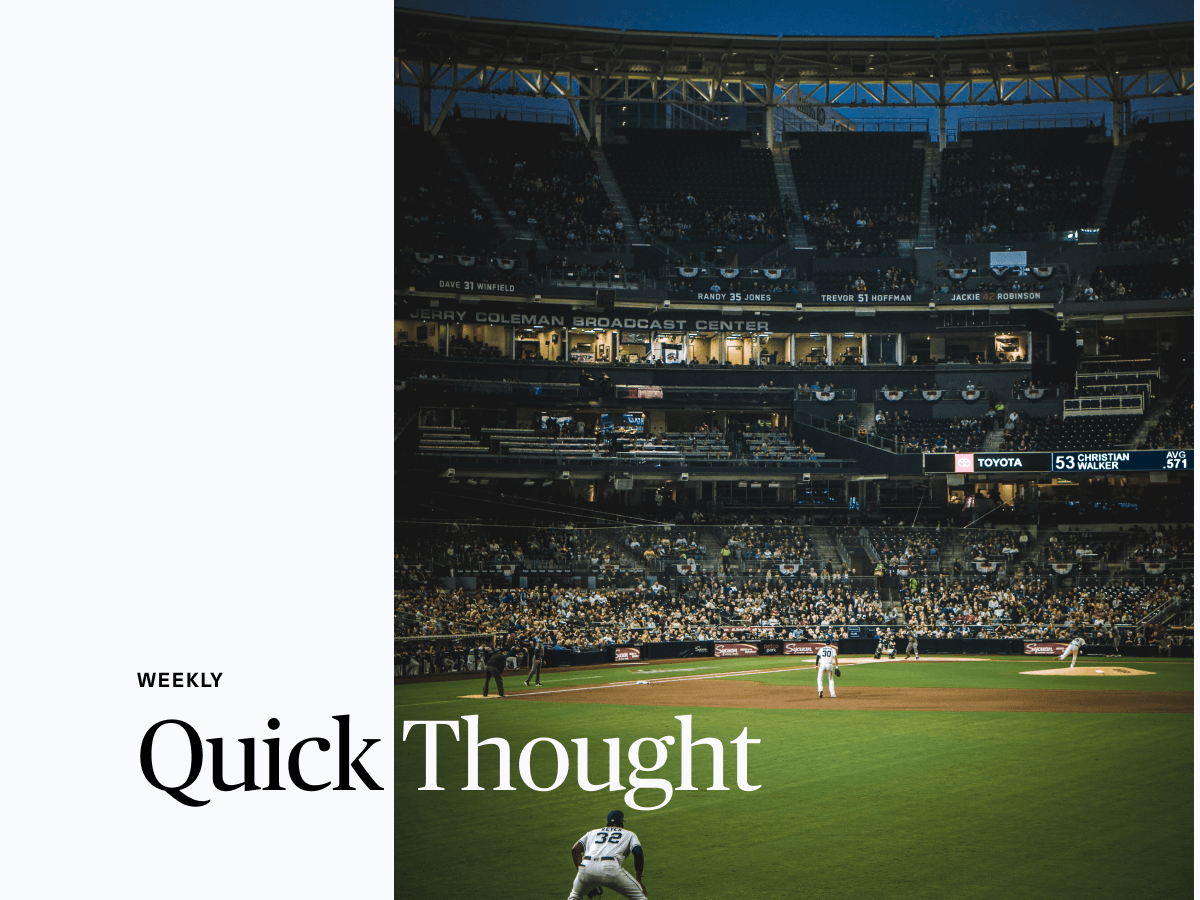Buffett & Sequoia
Jul 17, 2020

Warren Buffett lives in Nebraska and invests in established companies. Sequoia Capital is based in Silicon Valley and invests in fast-growing startups.
Despite being worlds apart, one of the ways they've earned their legendary statuses is held in common: slugging percentage.
Rather than achieving a 100% hit rate, their outperformance has come from their winners not just winning, but winning big.
Let's start with Sequoia. Their $60M investment in WhatsApp turned into $3B (a 50x return). Their $12.5M investment in Google grew to $4.3B (a 300x return). You can Google (no pun intended) the rest of their home runs.
Sequoia is OK with losing money on 90%+ of its investments, because they understand that the winners will more than make up for it.
Meanwhile over in Nebraska...Buffett doesn't buy a stock at Berkshire Hathaway expecting a 90% chance of capital loss. His #1 investing rule is quite literally "don't lose money." His #2 rule is "see rule #1." But despite his divergent outlook on process, the outcomes follow a similar Pareto distribution as Sequoia's: a few big winners have driven the majority of his returns.
Take Apple, for instance. Berkshire's original $36B investment has grown to $90B+ today. That's a ~3x return in about 4 years. Many of Berkshire's other bets have actually underperformed the S&P 500 in recent years -- Apple has single-handedly carried his team.
So what we can learn from Buffett and Sequoia Capital, two seemingly opposite investors?
While singles and doubles are nice, the few home runs are what will really drive long-term returns.
Bet accordingly.
Cash Management
© Copyright 2024 Titan Global Capital Management USA LLC. All Rights Reserved.
Titan Global Capital Management USA LLC ("Titan") is an investment adviser registered with the Securities and Exchange Commission (“SEC”). By using this website, you accept and agree to Titan’s Terms of Use and Privacy Policy. Titan’s investment advisory services are available only to residents of the United States in jurisdictions where Titan is registered. Nothing on this website should be considered an offer, solicitation of an offer, or advice to buy or sell securities or investment products. Past performance is no guarantee of future results. Any historical returns, expected returns, or probability projections are hypothetical in nature and may not reflect actual future performance. Account holdings and other information provided are for illustrative purposes only and are not to be considered investment recommendations. The content on this website is for informational purposes only and does not constitute a comprehensive description of Titan’s investment advisory services.
Please refer to Titan's Program Brochure for important additional information. Certain investments are not suitable for all investors. Before investing, you should consider your investment objectives and any fees charged by Titan. The rate of return on investments can vary widely over time, especially for long term investments. Investment losses are possible, including the potential loss of all amounts invested, including principal. Brokerage services are provided to Titan Clients by Titan Global Technologies LLC and Apex Clearing Corporation, both registered broker-dealers and members of FINRA/SIPC. For more information, visit our disclosures page. You may check the background of these firms by visiting FINRA's BrokerCheck.
Various Registered Investment Company products (“Third Party Funds”) offered by third party fund families and investment companies are made available on the platform. Some of these Third Party Funds are offered through Titan Global Technologies LLC. Other Third Party Funds are offered to advisory clients by Titan. Before investing in such Third Party Funds you should consult the specific supplemental information available for each product. Please refer to Titan's Program Brochure for important additional information. Certain Third Party Funds that are available on Titan’s platform are interval funds. Investments in interval funds are highly speculative and subject to a lack of liquidity that is generally available in other types of investments. Actual investment return and principal value is likely to fluctuate and may depreciate in value when redeemed. Liquidity and distributions are not guaranteed, and are subject to availability at the discretion of the Third Party Fund.
The cash sweep program is made available in coordination with Apex Clearing Corporation through Titan Global Technologies LLC. Please visit www.titan.com/legal for applicable terms and conditions and important disclosures.
Cryptocurrency advisory services are provided by Titan.
Information provided by Titan Support is for informational and general educational purposes only and is not investment or financial advice.
Contact Titan at support@titan.com. 508 LaGuardia Place NY, NY 10012.